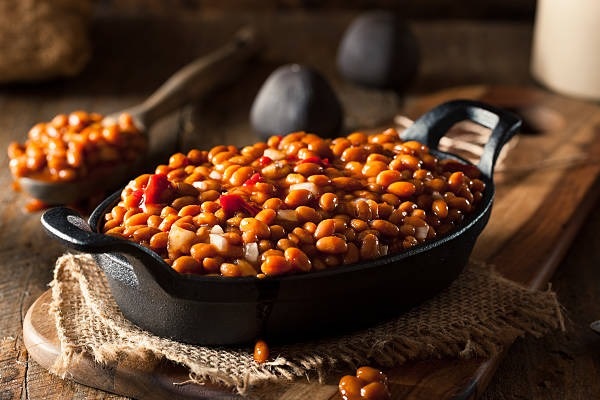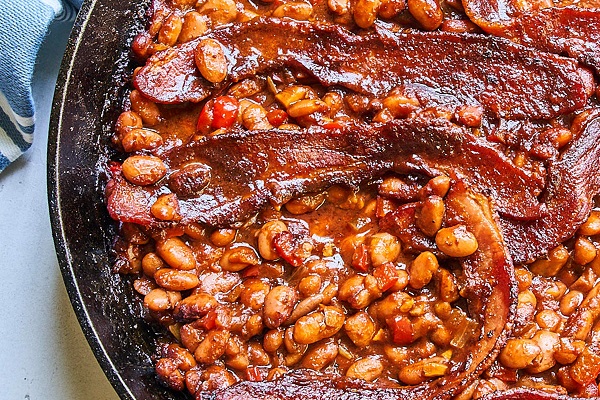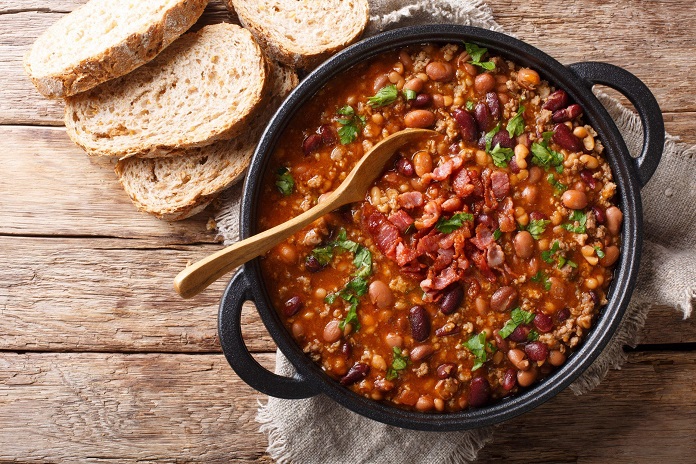Once on the previous days, one theory states baked beans are rooted in Native American cuisine special, dishes cooked by indigenous peoples in the northeast and belonging to tribes including Iroquois, Narragansett, and Penobscot.
Previously they baked beans in earthenware pots with maple syrup and, sometimes, venison meat and even bear fat. Also, baked beans evolved from the cassoulet, which is a slow-cooked stew from southern France using Tarbais beans, flageolet, or cannellini beans. While this dish has similarities to the modern baked beans and people believe English colonists brought this into America.

Similarly, back them U.S. people, baked beans as we know them are made with the same beans as were used in the indigenous American recipes: a type of haricot bean known as navy beans, which are native to South America. In the 18th century the baked or unbaked beans were first canned and the H.J. Heinz Company took this to another level, over the time passes, baked beans arrived in the U.K. which they were marketed as a luxury item, sold for nine pence a can, and proved to be a huge hit as time passed. As of now, Baked beans gradually made their way around the world, being eaten in a variety of ways.
Did you know that National Baked Bean Month was founded by the Michigan Bean Commission to promote all the benefits of the beans and to share the best ways to prepare baked beans.
| 16th Century (Navy Beans Come to Europe) | Haricot beans, which are also called navy beans, are introduced to Europe. |
| 17th Century (Baked Beans Recipes Spread) | Puritan Christian pilgrims that arrive on the east coast of America from Europe learn indigenous recipes from the Native Americans. |
| 1860s (Baked Beans are First Canned) | Beans (baked and otherwise) start being sold in cans. |
| 1886 (Heinz Goes to the U.K.) | The Pennsylvania-based H.J. Heinz Company first introduces the U.K. to baked beans, selling them at posh London department store Fortnum & Mason. |
| 1895 (Mass Production of Baked Beans Begins) | H.J. Heinz Company starts mass-producing cans of tinned baked beans. |
| 1910–1913 (The Tradition is Born) | The British Antarctic or Terra Nova Expedition takes crates full of Heinz beans with them — a photo of one of the members eating a tin of baked beans launches the tradition of cold baked beans on camping trips. |
| 1933 (The State Vegetable) | Massachusetts proclaims the navy bean — a primary ingredient in baked beans — as its state vegetable, even though beans are technically legumes. |
| 1951 (Heinz is Granted the Royal Warrant) | Despite its U.S. origins, Heinz is granted the Royal Warrant and cements its status as an honorary British icon |
| 1981 (Our Month is Her!) | The Michigan Bean Commission establishes National Baked Bean Month. |
| 20th Century (Baked Beans Popularity) | Sales expand, and baked beans are sold in less expensive stores across the U.K. — they are a huge hit in the market. |

FAQs
How are baked beans traditionally served?
Baked beans are commonly served as a side dish or main course which can be enjoyed with grilled or fried foods, such as sausages, bacon, or toast.
What nutritional benefits do baked beans offer?
Baked beans are a nutritious dish that are rich in protein, fiber, and essential minerals such as iron and magnesium.
What are baked beans?
Baked beans are a dish made from beans, usually haricot or navy beans, that are stewed or baked in a sauce
What are the origins of baked beans?
Baked beans have a long history and are believed to have originated in Native American cuisine.
Also, read more about National Strawberry Parfait Day – June 25, 2024
